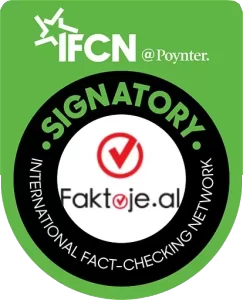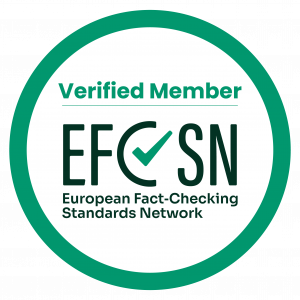JOEL ÇELA
Nearly a month ago, the Minister of Health, Ogerta Manastirliu, introduced the plasma therapy as a new method that would help the health system to combat COVID-19. During the past month, this method has been internationally approved to treat those infected with COVID-19. But, how effective is this method, especially in the context of the situation that our country is facing because of the pandemic?
On 19 August, the Minister of Health, Mrs. Ogerta Manastirliu announced the application of the new therapy to treat those infected with COVID-19 in an event at the Blood Bank of UHCT.
“We are here with Dr. Irena and the UHCT team for this important milestone in our plan for adding a new therapeutic treatment, namely the convalescent plasma therapy.” stated Mrs. Manastirliu.
The plasma therapy, which according to Mrs. Manastirliu is in the final implementation phase at the Blood Bank, would be utilized to treat infected patients by injecting the plasma of Coronavirus-recovered patients. This method provides those diseased with antibodies as an additional aid to fight the virus.
Less than a month later, on 10 September, the Minister of Health visited the Blood Bank together with the Mayor of Tirana, Mr. Erion Veliaj. Being a COVID-19-recoved patient, as he had stated, Mr. Veliaj visited the Blood Bank to donate blood to aid people infected with COVID-19, in accordance with the plan approved by the Ministry of Health.
“We have already started. 51 citizens recovered from COVID-19 have joined us to donate plasma, and owning to them, 16 patients have benefited from this new therapy, both at “Shefqet Ndroqi” and at the Infectious Diseases Service. Certainly, plasma is an addition to the therapies currently used to fight COVID-19.” – said Minister Manastirliu.
However, the Democratic Party Health Expert, Mr. Gazment Koduzi, in an interview discussing plasma therapy on “News 24”, stated that this method is effective only in the first infection stages, namely in the first week:
“This [plasma] is a certified method with positive effects, but only in the first COVID disease/infection stages, that is during the first week of infection. With this it is implied that a proactive approach by the health institutions in order to perform more tests to detect cases as early as possible is required, as the organism starts to produce its own antibodies after the first week.”
“Faktoje” contacted Dr. Sc. Ilir Alimehmeti, a clinical epidemiologist and the Vice-Dean of the Faculty of Medicine. He confirmed that studies have shown that plasma therapy effects are better when treatment for COVID-19 starts at an early stage. Dr. Alimehmeti told us that the majority of data are based on a large-scale study, involving 35 thousand COVID-19 patients in Italy, all of whom were in critical or very critical condition when convalescent plasma therapy was initiated (52.3% in intensive care and 27.5% intubated).
“According to this study, which was led by Prof. Arturo Casadevall (John Hopkins University, USA), the prognosis was better when plasma therapy was initiated within 3 days of COVID-19 diagnosis. In patients receiving the transfusion within 3 days, the 7-day mortality rate was 8.9%, whereas in other patients it was 11.6%. Meanwhile, the 30-day mortality rate was 21.6% in patients that had received the transfusion within 3 days and 26.7% in other patients (19.1% fewer deaths when the transfusion was given at an early stage).” – stated Mr. Alimehmeti.
In order to enhance the effectiveness of plasma therapy, large-scale testing is required to detect COVID-19 cases in the early stages, because, according to experts, plasma therapy is more beneficial at that stage. According to the DP expert Mr. Koduzi, this is where the weakness of the Albanian health system in the fight against Coronavirus lies.
“More testing must be performed, because the low number of tests performed is currently the “Achilles heel” of our health care system.
127 is the national emergency number established to handle only emergencies, accidents etc. It is not suitable for epidemic situations. The staff is the same since its design and establishment, because a specific staff capacity was planned initially.
The 127 hotline was called by anyone with any complaint. As a result, 127 underwent a black-out, it was blocked.”
“Faktoje” talked to several people who, as soon as they realized that they were exhibiting COVID-19 symptoms, had dialed 127, as advised by the Ministry of Health and PHI.
V.A. 40 years old, told “Faktoje”:
“I dialed 127 and described my symptoms, which included taste and smell loss and breathing difficulty, as a close relative had come down with fever. After asking me to identify myself and whether I was experiencing severe symptoms, they connected me to the emergency room doctor. Despite insisting to have the nasopharyngeal swab test done, because I had to notify my colleagues, the doctor said that if I had not been developing a high fever for at least a few days and if I wasn’t having diarrhea or vomiting, they could not perform the test.”
The 40-year old woman told us that the doctor had advised her to take medications at home, but her condition improved only after two weeks.
If not detected immediately, persons infected with COVID-19 experience worsening of symptoms after the first stage and hence the plasma therapy effectiveness decreases. The Minister of Health had declared that in September the number of tests would double, as a result of private laboratories licensing, however the daily reporting on the first two weeks of September shows that testing has not doubled.
Asked by “Faktoje” for his estimation about the success of plasma therapy implementation in Albania under these conditions, Dr. Alimehmeti said:
“I really wish I could say that the convalescent plasma is the key to the success of COVID-19 treatment, but virtually it is not so. This on the account of several reasons:
- Plasma contains non-standard antibody levels that vary between donors
- The majority of COVID-19-infected individuals has not been detected
- The undetected population has been vastly asymptomatic, thus the level of antibodies produced is lower (which is less effective for treating patients in severe condition).
- Plasma donation is part of the blood donation program, which has been historically lacking in Albania.
- The final therapeutic effectiveness of convalescent plasma has yet to be accurately determined.
The convalescent plasma therapy is new as regards treating COVID-19-infected individuals, because even the American Food and Drug Administration approved it for (urgent) use on 23 August.

However, according to a publication of 2016 by the National Public Health Institute at the U.S Department of Health the use of convalescent blood products to prevent and treat viral and bacterial infections in human models dates over a century ago, namely since 1880.






